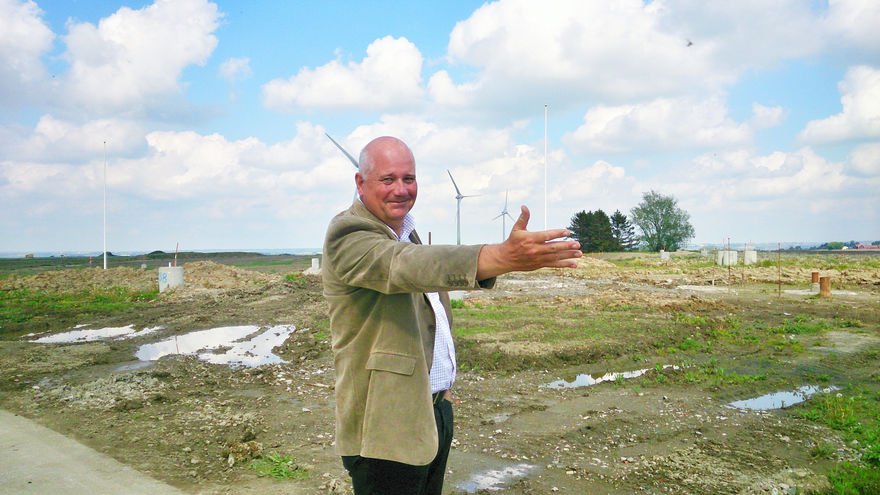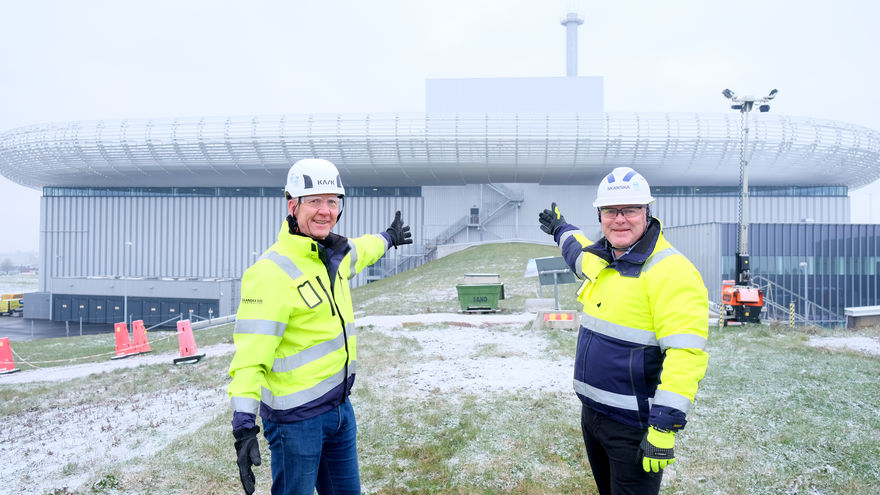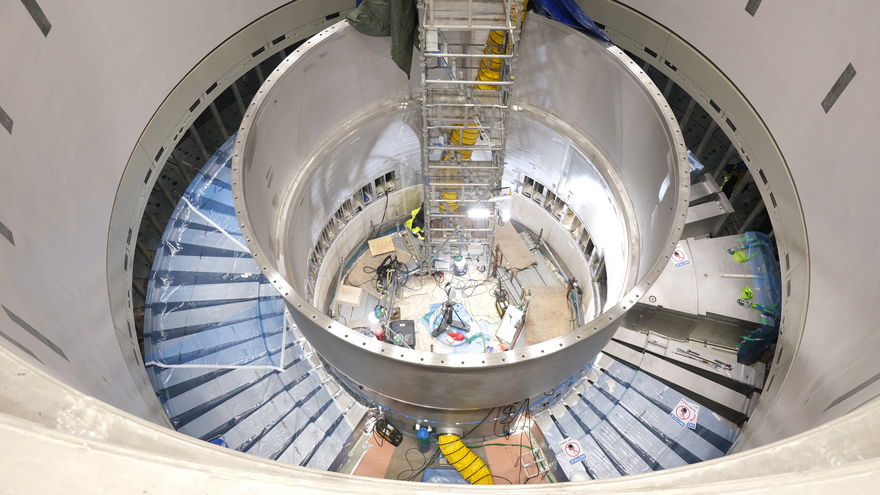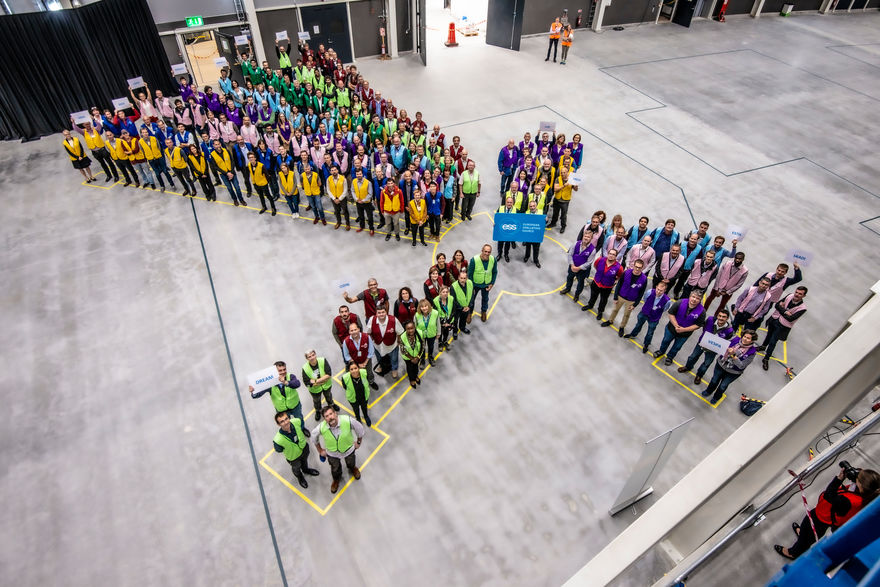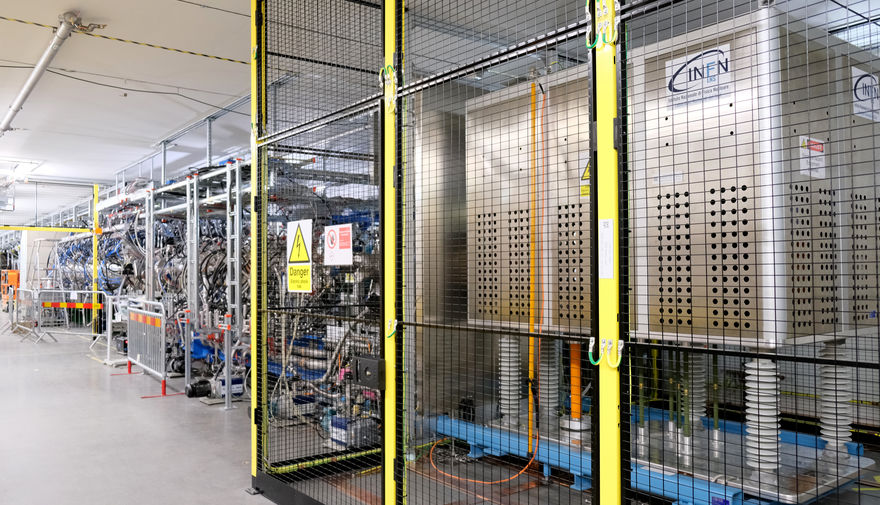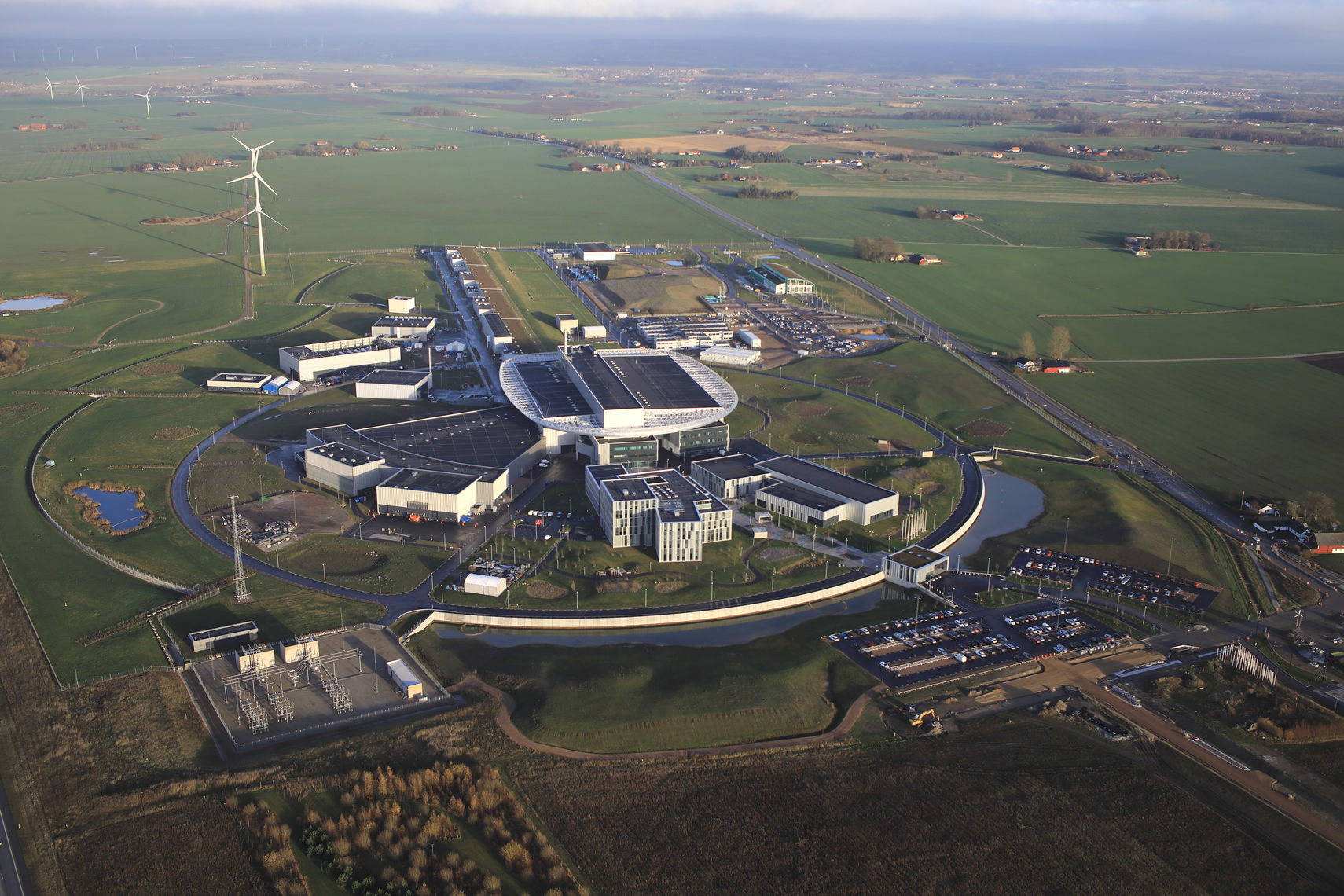
ESS construction partner Skanska has completed the construction of the 23 buildings and the surrounding landscape on the 70 hectares ESS site. The civil construction project, which is one of the largest in recent years in Sweden, started in 2014 and was handed over to ESS in December 2021, according to plan.
“We hand over a fantastic facility to ESS – and we do this on time. I will follow the continued progress and future science at ESS with great interest”, says Per Smidfelt, Project Director for Skanska.
Construction in collaboration
A collaboration contract between ESS and Skanska was signed in February 2014. The construction of ESS started later the same year.
The Conventional Facilities division within ESS managed the construction project from start to finish: “We started off on a green field in 2014”, Kent Hedin, Head of ESS Conventional Facilities, recalls. “Our task was to start the civil construction as soon as possible, whilst collecting all requirements from the ESS divisions.”
The buildings have been handed over to ESS gradually during the construction phase. The first buildings, including the Accelerator tunnel, were completed in the spring of 2017. The last buildings, handed over in December 2021, were the Target station and adjacent Instrument halls. Throughout construction, ESS have been granted parallel access to areas to perform time-critical installations.
The civil construction project was executed in collaboration, with guiding principles such as openness, honesty and mutual respect: “The way the contract was agreed, working in close collaboration with a staged target cost process, made us more flexible to changed requirements and design changes, at the same time as we kept construction going”, Kent Hedin explains and continues: “The project culture established early on, with a will to work together towards a common goal, made it possible to achieve what we did.”
Construction partner Skanska has been working side by side with ESS Conventional Facilities to deliver the civil construction project.
“With collaboration as the keyword, we worked as one team enabling us to meet the challenges we faced along the way. The fact that we have had zero serious accidents throughout the construction project tells us that we have done things in the right way.”, Per Smidfelt says. Leading the civil construction project over the finish line he concludes:
“You do not often get the chance to be part of a project that could really improve the world. ESS in Lund is one such project!”
ESS installation progress during construction
Thanks to an open dialogue with early access agreements, ESS made significant progress during the civil construction phase:

























